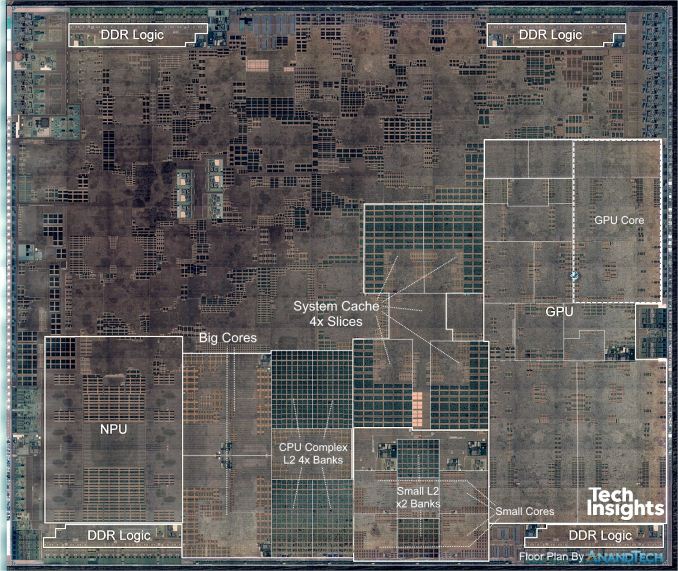
AnandTech: Apple A12 Bionic SoC ‘Just Margins Off the Best Desktop CPUs’
A new iPhone XS and XS Max review takes a deep dive into the inner workings of the A12 Bionic chip, the first commercial 7nm system-on-a-chip (SoC).

TechInsights
AnandTech, who is known for its deep technical analysis of silicon, has published a “much awaited deep dive of the new A12 SoC,” one of the most important upgrades to Apple’s flagship product, the iPhone.
The review begins by stating that over the last several years, Apple has been at the forefront of “both [architectural] design and adopting bleeding-edge manufacturing processes,” and the A12 is another generational leap for the Cupertino company, as it is the first commercially available 7nm silicon chip.
“The new process promises greater transistor density and reduced die area of the chip,” reads the report, “which gives Apple the ability to cram in more transistors in the same area, ultimately increasing the complexity and capabilities of the new SoC.”
The A12 Bionic is a complex CPU which comprises a six-core CPU and a quad-core GPU, with a separate eight-core processor dedicated to monitoring machine learning processes. As well as giving you a significant boost in overall performance Apple’s senior vice president of worldwide marketing Phil Schiller said that the new chip allows for “a trillion operations on every photo you take,” and enables key features like Smart HDR.
Apple’s A12 Bionic chip follows the 7nm fabrication process. The previous A11 Bionic and Qualcomm’s current Snapdragon 845 CPUs both use 10nm processes. Generally speaking, smaller nodes means you can fit more components onto the same physical space, allowing for faster, more powerful processors.
The review dissects the construction of the A12 SoC:
The SoC’s CPU complex is now powered by two new “Vortex” CPU cores running at up to 2.5GHz, providing new levels of high performance. Apple claims the new CPUs perform around 15% better than last year’s A11 Monsoon cores – here it seems the company’s marketing was a tad conservative as the real performance figures of the new CPU are significantly higher. Alongside the performant Vortex cores, we see four new smaller efficiency cores named “Mistral”. The new small cores bring some performance improvements, but it’s mostly in terms on power and power efficiency where we see Tempest make some bigger leaps. […]
On the right side we see the GPU complex with the four GPU cores and shared logic in the middle. The CPU complex is found at the bottom, with the two Vortex big CPU cores on the centre-left, divided by the big L2 cache, right next to the four small Tempest CPU cores and their own L2 cache.
The four big chunks of SRAM in the middle blocks are part of the system cache – this is a SoC-wide cache layer in between the memory controllers and the internal system interconnect & block memory subsystems. Here Apple uses this block as an energy saving feature: Because memory transactions to DRAM are quite expensive in terms of energy usage, being able to cache things on-chip will save a great amount of power, with the added benefit of possible performance increases due to the locality of the data.
The review concludes by calling the Apple A12 Bionic “a beast of a SoC.” While the A11 was already an industry leader in terms of performance and power efficiency, the A12 brings it to a higher level.
The Vortex CPU saw an enormous memory boost, which gives the SoC a huge performance increase. “Apple’s marketing department was really underselling the improvements here by just quoting 15% – a lot of workloads will be seeing performance improvements I estimate to be around 40%, with even greater improvements in some corner-cases,” reads the review.
With Apple improving it’s CPU to such high levels, the review notes that “we’re just margins off the best desktop CPUs; it will be interesting to see how the coming years evolve, and what this means for Apple’s non-mobile products.”
Read AnandTech‘s full review of the iPhone XS and iPhone XS Max here.

